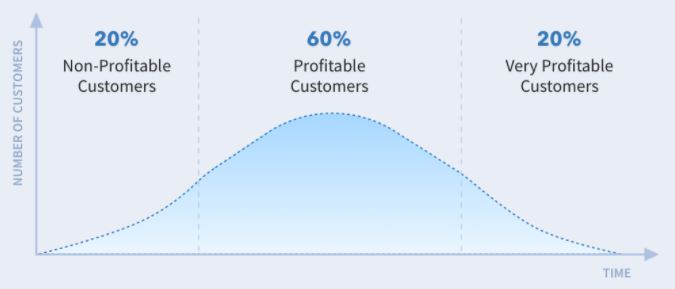
Customer Lifetime Value Analysis, or CLV, places dollar values on entire lifetime customer relationships. It is calculated by subtracting a customer’s acquisition cost from the projected future cash flows expected to be received from that customer. In other words, CLV forecasts a total net profit. To effectively gauge a client’s revenue potential, a CLV analysis must consider external factors, such as the person’s network for referrals, as well as demographics, such as income level and family size. This information, directly or indirectly, contributes to a customer’s lifetime value. CLV looks to the future and forces businesses to focus on the long-term health of its client relationships.
Who uses Customer Lifetime Value Analysis?
Due to its focus on long term relationships, CLV is heavily used in the business to business sector and within companies that use client contracts. Insurance Companies use this analysis to project profits from large corporate clients so they can appropriately price group coverage packages. CLV also helps establish pricing models for companies in the Manufacturing Industry, as they tend to conduct business with the same clients consistently. Within the Banking Industry, CLV helps distinguish which relationships are worth investing in, whether it be with another bank or with a retail client. Retail Businesses use CLV analysis to assess the demographics of their existing clients so they can effectively target ads to those with the most lifetime revenue potential. This way, they can optimize their return on marketing dollar investments
